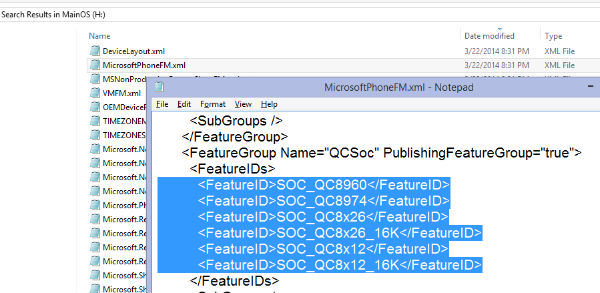According to a tweet from developer Justin Angel, six different Snapdragons will be supported. The first two are the 8960 and 8974, but the rest of the list appears to include two announced parts in two different versions, the 8x26 and 8x12.
Sorry Mediatek, stick to Android
A few days ago rumours emerged that Microsoft was in talks with Mediatek. The rumours revolved around cheap tablets rather than phones. However, this does not mean phones were off the table.
Mediatek has a number of affordable SoCs that could be a good choice for entry level and mainstream phones. It is also in the process of introducing on-die LTE modems, making its parts even more competitive.

Qualcomm is still the king of the SoC market, but Mediatek is quickly becoming the dominant player in the low end, namely in affordable Android smartphones.
Microsoft still has just two ARM SoC suppliers – Qualcomm for Windows Phone and Nvidia for ARM-friendly Windows RT.
Will Microsoft change its approach?
It is hard to say whether Redmond will remain loyal to Qualcomm and Nvidia. Both chipmakers have what Redmond is after. Qualcomm is the undisputed market leader in mobile SoCs, while Nvidia has tablet friendly high-end designs with powerful graphics, especially in the form of upcoming Tegra K1 parts.
On the face of it Microsoft does not really need to tap any additional chipmakers, as Qualcomm and Nvidia have everything covered for the time being. However, from a cost perspective a potential Mediatek deal could make sense, as it would allow Microsoft to enter new markets thanks to Mediatek’s strong presence in China.
For the time being though, it appears that Microsoft won’t change anything in the smarphone space, although we still don’t know whether this is true of tablets. While Nvidia has competitive designs for high-end tablets, it does not have anything for truly cheap tablets, hence there is still a chance Microsoft will look for alternatives if it decides to expand its ARM tablet push to low-end devices.
With Bay Trail-T Windows tablets selling for as little as $299, a low-end Windows ARM tablet would only make sense if it sold for much less and the huge Tegra K1 in 32-bit and 64-bit flavours sounds like overkill.




